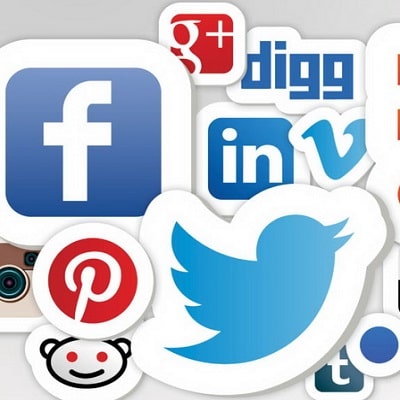
Social media: the history of its emergence and development
Social media has totally changed the way people live, dividing the world into offline and online. This digital tool gives people a great opportunity to communicate with each other remotely, to read books directly from a computer or smartphone screen, to listen to music, to look at photos of friends and acquaintances. Facebook, Vkontakte, Twitter, Instagram have made life much easier for modern man. But before, we didn’t have all these benefits of digitalisation. How did social networks come into being, develop and improve? Let’s talk about that in our publication.
The advent of social networking: A little bit of history
The term “social network” was coined by sociologist James Barnes in 1954. He did not use it to refer to the Internet, as we all know it, but to a social structure with a number of groups of nodes, represented by different elements of social significance, and the interaction in society between members of these groups. The social network, as Barnes saw it, was a group of people interacting with one another, using the principles of two-way or one-way communication.
The year 1969 marked the emergence of the Internet for the world, and it was during this period that the scientific concept proposed by James Barnes began to grow in popularity, which, in turn, became the impetus for the active development of social networks.
The first social networks: what were they like?
The first computer-based social network was created in 1971. It was inaccessible to the public at large and was used only for transferring secret data between military personnel. In 1969, DARPA, an agency of the US Department of Defense, created the first prototype of the Internet.
In 1988, the ‘IRC’ protocol was invented as the basis for relaying chat on the Internet. Its author was a researcher from Finland named Oikarinen. The same researcher developed the software that made the protocol work smoothly. Since then, communication between users of the network has been carried out in real time.
However, the real popularity of social networks only began in 1995, when one of the inhabitants of America, Randy Conrads presented to the public a project of his own design, Classmates.com, the prototype of which in the Russian-speaking segment of the Internet is now “Odnoklassniki”. Users who registered on this site were given access to a directory of school leavers, universities and other educational institutions, and could search for their classmates or classmates there. Classmates.com currently holds a leading position in the ranking of popular social networks. This is proven by its 50 million users!

The history of popular social networks
Today’s social networking sites include such established giants as Facebook, Twitter, Instagram and Vkontakte. Each of them has its own unique history of formation and development.
The date of foundation of Facebook Inc. is considered to be February 4, 2004. One of today’s most famous social networks was initially headed by four Harvard University students – Mark Zuckerberg, Dustin Moskowitz, Eduardo Saverin and Chris Hughes. At the same time as the new company, the classmates are setting up a website with the same name. Interestingly, Facebook was initially not at all like a social network. Rather, it was a small site for internal use by Harvard students. It didn’t take long for registration to become available to almost all of Boston’s universities. A little later, it was available to all Americans with email addresses in the edu domain. In September 2006 Facebook was opened for all internet users aged 16 or older. Facebook is currently one of the five most visited websites. In a month its audience reaches 1.968 billion people.
The social network Vkontakte, developed by Russian-born Pavel Durov, is the Russian equivalent of Facebook. The main audience of the multilingual site is represented by Russian-speaking users. Today, the number of users of this social network has reached 410 million people. Originally, the resource was focused on Russian university graduates and students, but over time, it has transformed into a modern and fast tool for online interaction between people of different age groups.
Twitter first appeared on the Internet in 2006. The service was not initially available to the public either, but served as a tool for internal interaction between Twitter employees. Since 15 July 2006, the social network has been enabling the public exchange of messages (tweets). Tweets are instantly displayed on user pages. Today, Twitter has more than 300 million followers. The social network continues to be popular with many internet users.
The social network Instagram was originally introduced as a free service for sharing photos and videos. The date of creation of the resource was October 6, 2010. At that time, the service had a completely different name – Burbn (after the favourite drink of one of the creators of the social network – bourbon). The possibilities of Instagram at first were much wider than now. Its users could not only post pictures, but they could also plan meetings with friends in different places. Subsequently, when the creators of this resource did an analysis of the statistics – it turned out that the lion’s share of users just share their photos. It was then decided to remove all unclaimed features, leaving only the ability to publish photos. Today’s Instagram audience totals 200 million active subscribers, who have uploaded more than 16 billion videos and photos over the entire period of the social network’s existence.
